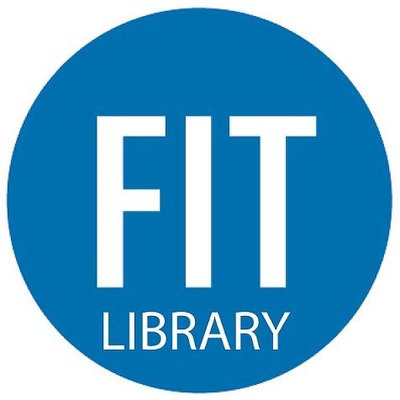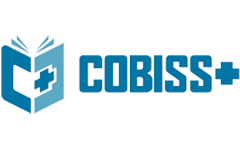Comparing Random Forests Regression with Logistic Regression to Determine the Most Important Factors Affecting Congenital Malformations For Newborn Babies in Iraq
DOI:
https://doi.org/10.61841/rk3z0e42Keywords:
Tree Regression, Random Forest, Binary Logistic regression, Congenital malformation, Mean Square ErrorAbstract
A congenital malformation is a structural defect in one or more parts of the body from birth. The causes and sources of birth defects may be genetic or caused by a non-genetic event before birth. Some congenital malformations may be caused by taking drugs, or sometimes the causes are unknown. In recent years, the rate of congenital malformations among newborn children in Iraq has increased, and to identify this problem and identify the most important factors affecting it, a sample of children with congenital malformations was taken to the maternity hospitals of the Health Department of Baghdad/Rusafa and Karkh—Department of preterm infants of 2504 births. To identify the most important factors affecting the congenital malformations using artificial intelligence techniques and machine learning, including random forests regression and logistic regression decline, as these techniques are one of the most advanced techniques used in the case of big data , We concluded from this research, which aimed to find the best model for estimating the data of congenital anomalies in Iraq through the use of two types of machine learning models (artificial intelligence) and as these types are regression models at the same time, after estimating each model, we compared using the mean squares error criterion and it was the best A model is a random forest model regression.
Downloads
References
1. Biondo, S.; Ramos, E.; Deiros, M.; Ragué, J. M.; De Oca, J.; Moreno, P.; Farran, L.; Jaurrieta, E. "Prognostic factors for mortality in left colonic peritonitis: A new scoring system." Journal of the American College of Surgeons. 191 (6): 635–42. (2000). doi:10.1016/S1072-7515(00)00758-4. PMID 11129812.
2. Boyd, C. R.; Tolson, M. A.; Copes, W. S. "Evaluating trauma care: The TRISS method. Trauma Score and the Injury Severity Score". The Journal of Trauma. 27 (4), (1987).: 370–378. doi:10.1097/00005373-198704000-00005. PMID 3106646
3. Breiman, L. Random Forests, Machine Learning, 2001, Volume 45, Issue 1, pp. 5–32.
4. Couronne, Raphael. Probst, Philipp.Boulesteix, Anne-Laure. Random forest versus logistic regression: a large-scale benchmark experiment. BMC Bioinformatics. 2018
5. G. Biau, Analysis of a Random Forest Model, J. Mach. Learn. Res. 98888 (2012) 1063–1095.
6. Goodfellow, Ian; Bengio, Yoshua; Courville, Aaron. Deep Learning. MIT Press. 2016
7. Hastie, T., Tibshirani, R., Friedman, J. The elements of statistical learning: data mining, inference, and prediction. Springer. 2009
8. Hosmer, D.W. "A comparison of goodness-of-fit tests for the logistic regression model" (1997). Stat Med. 16 (9): 965–980.
9. Kologlu, M.; Elker, D.; Altun, H.; Sayek, I. "Validation of MPI and PIA II in two different groups of patients with secondary peritonitis." Hepato-Gastroenterology. 48 (37), (2001): 147–51. PMID 11268952.
10. L. Breiman, Random forests, Mach. Learn. 45 (1) (2001) 5–32.
11. Le Gall, J. R.; Lemeshow, S.; Saulnier, F. "A new Simplified Acute Physiology Score (SAPS II) based on a European/North American multicenter study." JAMA. 270 (24): 2957–63. (1993). doi:10.1001/jama.1993.03510240069035. PMID 8254858.
12. Marshall, J. C.; Cook, D. J.; Christou, N. V.; Bernard, G. R.; Sprung, C. L.; Sibbald, W. J. "Multiple organ dysfunction score: A reliable descriptor of a complex clinical outcome." Critical Care Medicine. 23 (10): (1995). 1638–52. doi:10.1097/00003246-199510000-00007. PMID 7587228
13. Rokach, Lior. Maimon, Oded. Data Mining with Decision Trees: Theory and Applications. 2nd ed., World Scientific Publishing Co.
Downloads
Published
Issue
Section
License
Copyright (c) 2020 AUTHOR

This work is licensed under a Creative Commons Attribution 4.0 International License.
You are free to:
- Share — copy and redistribute the material in any medium or format for any purpose, even commercially.
- Adapt — remix, transform, and build upon the material for any purpose, even commercially.
- The licensor cannot revoke these freedoms as long as you follow the license terms.
Under the following terms:
- Attribution — You must give appropriate credit , provide a link to the license, and indicate if changes were made . You may do so in any reasonable manner, but not in any way that suggests the licensor endorses you or your use.
- No additional restrictions — You may not apply legal terms or technological measures that legally restrict others from doing anything the license permits.
Notices:
You do not have to comply with the license for elements of the material in the public domain or where your use is permitted by an applicable exception or limitation .
No warranties are given. The license may not give you all of the permissions necessary for your intended use. For example, other rights such as publicity, privacy, or moral rights may limit how you use the material.
















